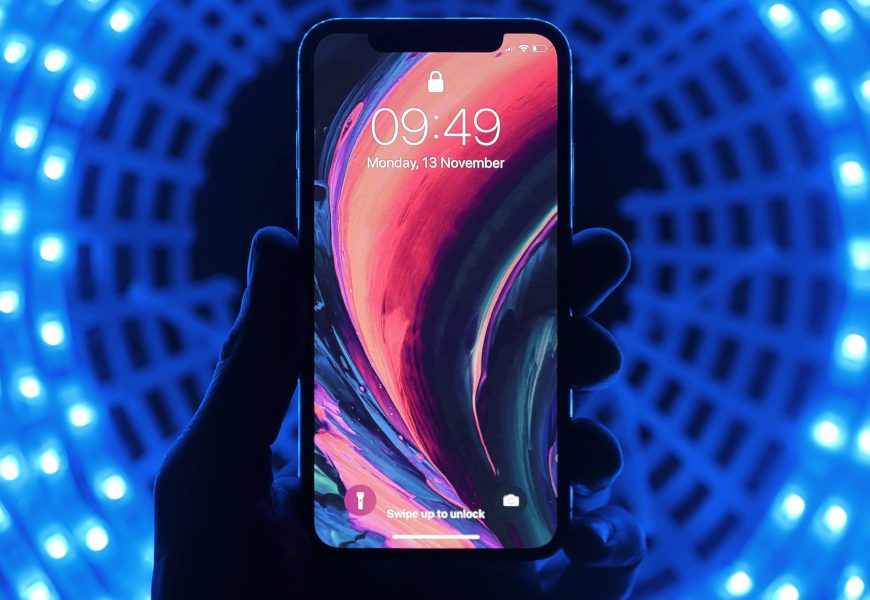iPhone X. Photo courtesy of Youssef Sarhan/Unsplash.
Apple regularly turns its annual phone releases into events of epic proportions, and this year was no different. Apple CEO Tim Cook came on the stage to announce not one, but two phones for the Apple enthusiasts out there. The first one was the iPhone 8 and iPhone 8 Plus. If you were to ask most people about the difference between the iPhone 7 and the iPhone 8, they wouldn’t have much to say, as there is almost no recognizable difference between the two in terms of design and looks. There are certain differences, though: the iPhone 8 has a glass back, which now allows you to have wireless charging (via the AirPad, another accessory that was unveiled at the event), and it is not offered in rose gold, the color which distinguished Apple products for several technological generations. The iPhone 8 is now faster, and the screen looks a bit better, thanks to the Apple Retina HD display now supporting True Tone.
The meat of Apple’s presentation did not have to do with the iPhone 8, however, but with the much-rumored iPhone X. To celebrate the 10th year of the iPhone, Apple unveiled a brand-new phone that had no chin or top section separate from the display; the entire front face is the display itself. The resolution of the screen is better; the two cameras that were horizontal in the back of the iPhone 7 are now vertical; there is a glass back for wireless charging; and there is no home button. Now, one might wonder how the people are going to unlock their phone; if there is no home button to have TouchID, then how can somebody open their phone, or go to the home screen for that matter? Well, Apple ditched TouchID and is now going for a new piece of technology called FaceID. This means that instead of your fingers, the iPhone X will shoot out thousands of dots onto your face to map out a specific facial profile and unlock your phone when you look directly at it. Apple assures its consumers that the FaceID feature will work in the dark, through changes in facial features such as growth of facial hair or the addition of glasses, and it will only work when your eyes are open and staring into the camera. So, don’t get worried about people unlocking your iPhone X by holding it to your face while you are sleeping.
Even though the event was not bogged down by questions regarding FaceID and its supposed implications into our everyday lives, the horrors of these iPhone improvements started to come to light as the excitement of the event wore down. Just after the iPhone X was announced, Senator Al Franken (D-Minn.) contacted Apple regarding the safety and security of the FaceID feature. This move indicates that the government is interested in the facial identification features and the profiles created by this feature. If this sounds Orwellian, it may be because it is. If the government has access to the facial profiles of millions of iPhone X users within the country, this would mean the total loss of privacy on a biological scale. First, it was the fingerprint, and now it is the facial profile. This opens a whole new lot of possibilities for the government and corporations. What if Facebook could show you ads based on the movement of your eyes looking at objects on the screen? What if the government could use CCTV cameras to track you based on this facial profile feature? FaceID, if not handled correctly by Apple, could cause the opening of Pandora’s box once again.
However, given Apple’s need to protect its positive public image, the company did not focus on these potential disasters of FaceID, but rather on features that they thought were more important. This more important feature that Apple proudly boasted about during their iPhone X reveal is the “Animoji,” where the face scanning features of the iPhone X could be used to animate specific emojis with whatever the user is doing with his/her face. During the reveal trailer of the phone, the company debuted animated versions of the monkey, unicorn, alien and poop emojis. So there is another problem that the customers shouldn’t worry about: being even more expressive with their emojis.
Apple tells its consumers they shouldn’t worry about all of these possible negative outcomes of face scanning technology, and the company might be right about that, but there is one other thing concerning most consumers: the price. The iPhone X has a starting price of $999.99, but if a consumer wishes to upgrade storage from 64 GB to 256 GB, the price skyrockets to $1149.99. If you thought that you might want to opt out for the iPhone 8 instead, the cheapest option starts at $699, with the iPhone 8 Plus starting from $799.
The reveal event for these two new lines of phones left people on the fence and with a lot of questions. Is the iPhone X actually worth its price? Why get an iPhone 8 when there is the iPhone X? Why get an iPhone X when there is the iPhone 8? Does anybody remember the headphone jack? Why did Apple get rid of the headphone jack? These are questions that everybody wants answered, but unfortunately they will not be answered until both of the phones are on the market and being used by the masses. The iPhone 8 gets an earlier release date, Sept. 22, while the iPhone X will be released later this year, on Oct. 27.










